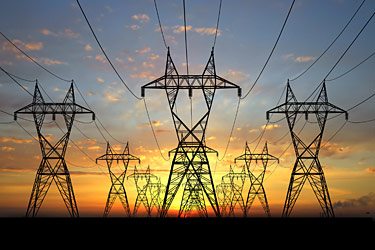
The world of energy is finally beginning to use modern “smart” technology to cultivate its next moves. In the same way that an Olympic long distance runner benefits from fully understanding the flow of energy in the body, city planners and architects can build more energy-efficient cities by understanding the functionality Internet-enabled devices bring in connecting both individuals and infrastructure.
The creation of an energy standard for entire cities through technology also improves the ability of that city to function as a “living thing” — with real-time responses to its energy needs.
What is a “Smart City”?
The best way to describe smart cities is to say that they are cities whose systems function as a single unit. A normal city infrastructure, although centralized around a “grid,” may not function as an integrated unit. For instance, power cannot be easily diverted from a section of town with a surplus to a part that is experiencing a blackout. There is also virtually no integration of digital technology as a real-time monitor or arbiter of resources in a city that is not “smart.” This is a huge disadvantage. Problems generate data in real time, and the technology is there to respond to those problems in real time. The smart city simply allows the city to use the data that it generates quickly and efficiently!
Smart Cities and Traditional Utilities
Though the smart city model is the future goal, traditional utilities still function as a funnel for the resources that all cities – “smart” or not – use. But the ever-improving “smart grid” helps improve today’s energy savings through the generation and distribution process. According to Just Energy, utilities across the country tend to refer to energy-efficiency as the “fifth fuel” because of its low cost and significance in helping to meet electrical demand.
A smart city is quite efficient at redirecting data and compensating for problems; however, the generation of power is still a concern. Traditional power providers still provide the architecture for renewable power sources that the smart city will eventually be able to manage automatically.
The Sharing Economy
In most cities, each resource is independent of the others. For instance, the light grid runs completely apart from the power for sewage system. In a smart city, all of these resources function as one. If there is a surplus of energy in one location and another needs resources, the smart city can divert that power. A smart city can also conserve energy when more is being used than is necessary. The result is a city with vehicles, power generators and buildings that waste less energy and use power more efficiently as a single unit.
Flagship Smart Cities
Amsterdam, Barcelona, Milton Keynes, Stockholm and Santa Cruz are the flagship examples of successful smart cities. Improvements include Barcelona’s improved and less congested bus system and smart street lamps in Amsterdam that respond to the number of pedestrians on the street. Cities like Milton Keynes have bolstered local engineering businesses by offering substantial rewards and contracts to private businesses that provide useful upgrades to the smart city infrastructure.
The US Smart Cities Challenge is a similar initiative that will see the US government pour $40 million of resources into a lucky mid-size city. Actually, luck has nothing to do with it – the money will go to the city with the best ideas for implementing a cost effective, highly functional smart city through smart transportation.
The Next Initiative
With all of the incredible initiatives that are taking place around the world, it is only a matter of time before the smart city becomes the norm instead of the exception. For those who want to participate in the future of energy, now is the time to bring your best ideas to the table.

